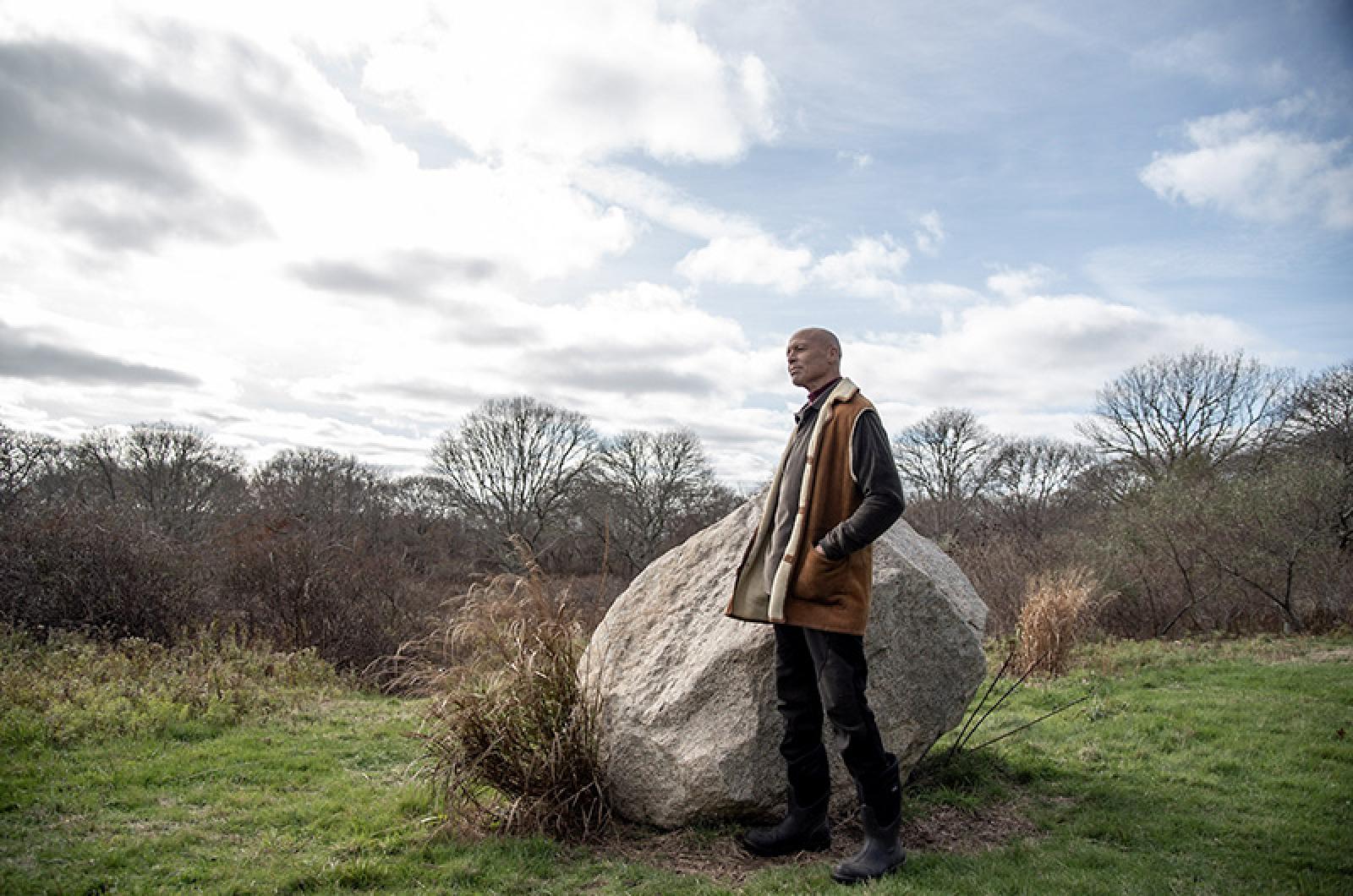In 1621, on a crisp day in November, the Plymouth colonists joined with the members of the Wampanoag tribe to feast on the bounties of the autumn harvest. Over cranberries and game, the two peoples came together to celebrate the season, the land and above all, their union.
This is the story of America’s foundation at the Plymouth colonies — a myth known to most as the story of the first Thanksgiving. But on Tuesday, historian David Silverman and Wampanoag tribe member David Vanderhoop set the record straight, sharing the true story of the first Thanksgiving in a conversation hosted by the Martha’s Vineyard Museum.
Blending history and personal account, the two speakers shed light on the uncomfortable — and often violent — story of the pilgrims, the tribe and colonial America.
Mr. Silverman, a professor of history at George Washington University who wrote his first book on the Vineyard Wampanoag, took the virtual stage first to share a historical deep-dive into the relationship between the Plymouth colonists and the Wampanoag tribe.
“I contend that the Thanksgiving myth is just that — it’s a myth, it’s not history,” said Mr. Silverman.
The real story, he explained, features far more bloodshed and destruction, including a European plague that wiped out enormous swaths of the native population, the continued exploitation of native people at the hands of the colonists and above all, the grabbing of native lands.
The actual Thanksgiving feast was born from a mutual defense pact between the English colonists and the Wampanoags against the neighboring Narragansett tribe, Mr. Silverman said.
“Neither side attributed much importance to this event,” Mr. Silverman told the audience. “The Wampanoags never invoked it again, at least on record in any diplomacy between themselves in the English…and English records dedicated two paragraphs to it.”
The myth as we know it did not emerge until the late 1840s, he said, when Reverend Alexander Young added a footnote to the historical record describing camaraderie and unity between the groups.
“The mythic Thanksgiving would have us believe that friendly indigenous people welcome the English to their lands and then effectively grant them their country so that the United States can emerge from the colonies as a beacon of democracy, religious freedom, Christianity and opportunity,” said Mr. Silverman. “This is a whitewashed story of bloodless colonialism in which no crime is done, in which no one is enslaved, in which no land is stolen. In North America, colonialism was and is a bloody business of exploitation.”
Switching gears, Mr. Vanderhoop, co-founder of the Island nonprofit Sassafras Earth Education, took the virtual stage to share his personal experience of Thanksgiving as a Wampanoag tribe member on Martha’s Vineyard.
“This holiday coming up is more like the origins of the United States than what it is portrayed to be,” Mr. Vanderhoop told the audience. “For us Wampanoag people, it’s the beginning of the genocide, the dispossession of land and the constant warfare that has been brought on us...from 1607 to the present day.”
Sharing stories about life for the Wampanoag tribe on Noepe, or Martha’s Vineyard, before the colonists, Mr. Vanderhoop noted how the historical record does not reflect indigenous voices.
“Early written history was written by white people when they came here and it is through their lens…They saw [this] as open land free land, that nobody desired, that was theirs for the taking,” he said. “I am appalled by history, but it is history. And I have to live today and deal with that.”
In his talk, Mr. Vanderhoop also reflected on his upbringing in a traditional hunting and gathering family on the Island and the ways that his identity as an indigenous man colored his early life.
“It wasn’t until I was bused down-Island in fifth grade that I encountered who I was and the negativity around it,” said Mr. Vanderhoop of his time at school on the Island. “That was my introduction to the outside world, where I was not welcome.”
A question and answer period followed with numerous inquiries including how to best celebrate the day while also acknowledging the country’s violent past.
“I don’t think anyone, Wampanoag or otherwise, is opposed to the idea of getting together with family and friends, and offering thanks for what’s good in our lives. I think we should all do that more often,” Mr. Silverman said. “What I take issue with is attaching that beautiful ritual to a false and I think damaging history. If we’re going to invoke pilgrims and Indians every Thanksgiving season...I would contend that we need to get the story straight, warts and all.”
The event came to a close with the speakers reflecting on the final question of the evening — how to work to create a more peaceful future.
“There’s going to be a lot of unhappiness moving forward, as we as a pluralistic nation confront the truth about our collective past,” said Mr. Silverman, reflecting on the work still to be done. “Think of our country as the house that we’ve all inherited. Anytime you inherit a house, there are repairs that need to be made [or] the rot will spread and undermine the foundation of the house. You don’t need to feel guilty about those repairs, but you do need to acknowledge the need to make them.”
As virtual applause streamed in through the comment section, Mr. Vanderhoop reflected on the importance of acknowledging the tribal land where we all live today.
“I ask that you be truthful and honest with yourself and your families this season,” said Mr. Vanderhoop. “Noepe, Martha’s Vineyard is Wampanoag territory. We the Wampanoag people still are here and we will remain.”







Comments (3)
Comments
Comment policy »